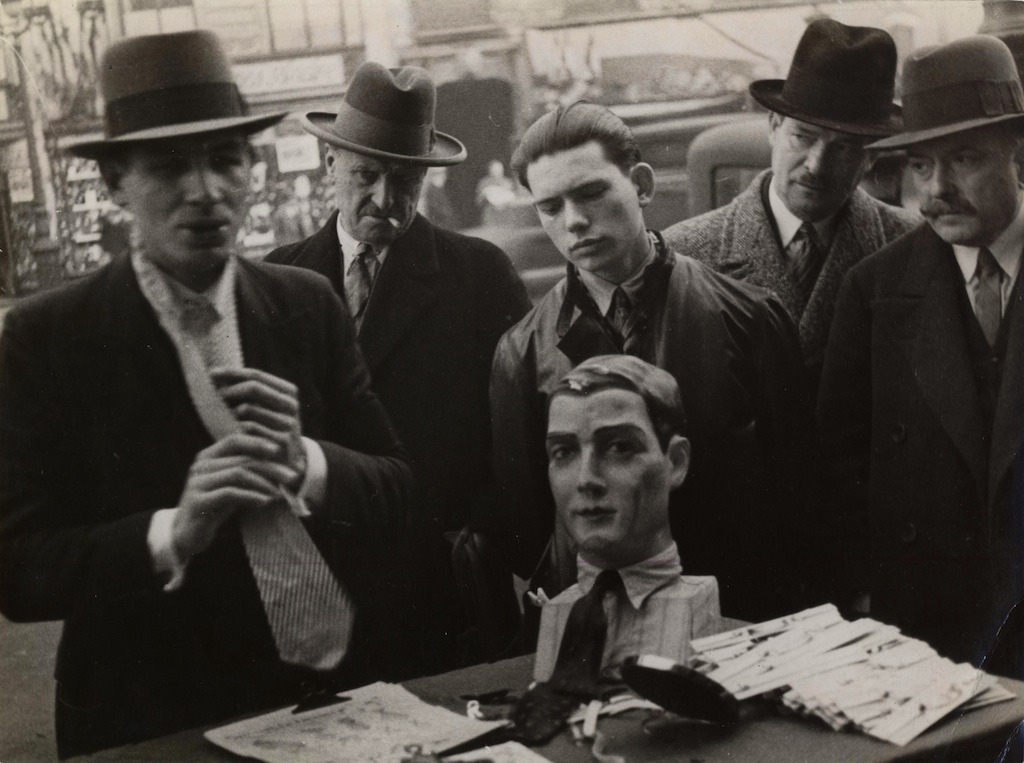
Brodsky, Tie Seller, Paris, c. 1935. Photographer unknown. Collection: Michel Frizot
In 1826 or perhaps a year later, Nicéphore Niépce took the oldest surviving photograph. There is a photography museum named in his honor in Chalon-sur-Saône in Burgundy, France, and last week I paid a visit. I wanted to see the permanent collection, but my immediate reason was to catch up with an exhibition titled “Toute photographie fait énigme” (“Every Photograph is an Enigma”), which I had missed a few months ago in Paris.
Curated by the French historian of photography Michel Frizot, author of Photo Trouvée, the show was, as I expected, of exceptional interest—it moves to the Fotomuseum Winterthur in Switzerland in October, and there is a catalogue with text in English. Frizot’s thesis is poetically stated in his title and it’s a proposition I would be happy to use as the tagline for this photography column. The exhibition is based on pictures he has collected over many years and it presents a theoretical investigation of 11 different categories of photographic enigma.
The picture shown here comes from the category titled “The Enigma of the Relationship” where, as Frizot observes, “The photographic image engages the viewer in a singular relationship with the subject photographed, eye to eye.” He speaks of the photographs in the exhibition as “collected gazes” and the picture captures six—or seven if we also count the unknown photographer’s—but only one of the subjects is gazing unambiguously into our eyes and, to compound the enigma, that disturbingly attentive viewer is an insentient dummy. Yet its gaze seems as alive and self-aware as any person’s. Its eyes drill into us. It appears to know who we are. Like all the pictures in this category, the photograph puts us in the position of witness and draws attention, as Frizot notes, to our confusion as perceivers.
The hatless young man with averted eyes and hair slicked back as neatly as the mannequin’s is caught in a moment of consonance with the dummy. The gazes of the other participants are glued to the man trying on a tie, like dubious detectives sizing up a suspect. His eyes are too shadowy to be sure where he is looking. Is it at us? The doubt is enough to implicate us as viewers. Frizot’s caption states only that the picture, taken in Paris around 1935, shows Brodsky, a tie seller. Most likely Brodsky is the figure on the left, in the middle of a routine sales pitch on the street. The photographer’s purpose in recording this scene is opaque. Nevertheless, as is often the case with “authorless” found photos, the image’s composition—the tilt of the heads, the counterbalance of the hats—would appear to be far from accidental.See all Exposure columns

